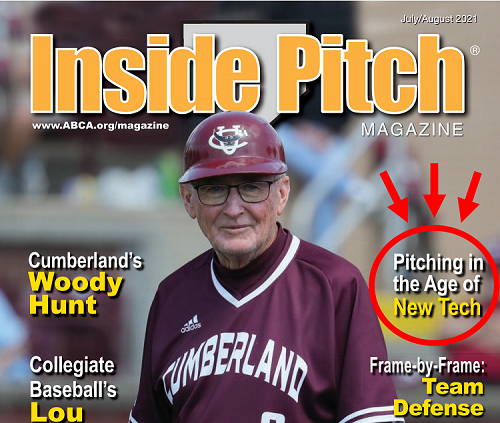
Interested in a hard copy of the article please click here.
Baseball, like every other industry, is under siege from new technology and it’s making sure the game evolves in many ways. Some love it, some hate it, and everything in between. Whether you’re a fan of technology or not, it’s difficult to ignore. It’s here in full force and it’s changing baseball with it. Those that are too close-minded to take the time to expand their knowledge of the new performance metrics run the risk of being left behind, both in terms of overall knowledge about the game and improving an athlete’s efficiency in performance.
Here at RPP, we look at each athlete through a holistic, body-focused prism. To us, the body is the center of everything. It starts and ends with the body. However, technology is now an important piece of the puzzle. For those that don’t really care for all the new data and information, there is no hiding the facts. The info makes you a better coach by simply giving you one more tool in your toolbox. Whether inside or outside the nets, data, combined with all other assessment information and applied appropriately, creates the perfect storm and is incredibly valuable to all thing’s performance.
Now, let’s get to it, how do we assess pitchers in the age of new tech inside and outside the nets. Generally speaking, assessing, and training process for today’s pitchers has four separate pillars:
-
- Movement Screen
- Strength and Power Testing
- Pitching Mechanics Evaluation
- Pitch Movement Evaluation
Here’s the short of it, to a large extent technology is making this process easier and doing it with much more precision. But to be fair, technology hasn’t changed everything.
1. Movement Screen
The first step in the process is a basic movement screen. It’s ground zero for any training program. In some form or other, many of the issues pitchers face on the mound can be traced back to what we see in a movement screen. Many times, it can even predict what we’re more than likely to observe on video or motion capture later in the assessment process. Without a movement screen, you’re basically flying blind.
A coach can scream and yell all he wants but to quote Frans Bosch, “the body cares very little about what the coach has to say”. In other words, if the body can’t physically perform the task, there isn’t a whole lot a coach can do.
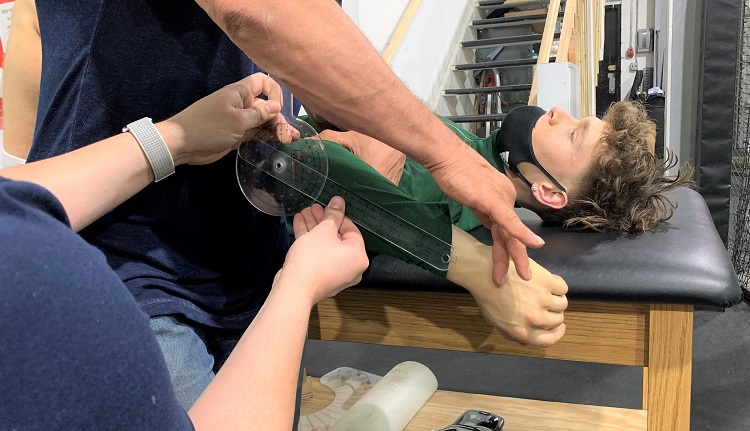
While the movement screen happens to be the least tech-oriented aspect of the process, it’s where we always refer back to when trying to tie together all the different pieces of data. A movement screen is an integral part of how we evaluate a pitcher’s movement strategies, and it can tell us a lot about an athlete’s mobility and stability, range of motion and even fascial issues. A thorough assessment will evaluate a pitcher’s overall movement by reviewing the following categories:
-
- Laxity Test
- Standing Static Tests
- Shoulder
- Static Test
- Dynamic Movement
- Strength and Stability
- Flexibility and Tightness
- Lower Half
- Flexibility and Tightness
- Strength and Stability
- Other Tests
- Lunge Test
- Kneeling Test
Here is what a typical assessment report may lay out in terms of potential issues. There is tremendous value in this information, not only for evaluating potential flaws in the delivery but also weaknesses that need to be addressed in any strength training program.
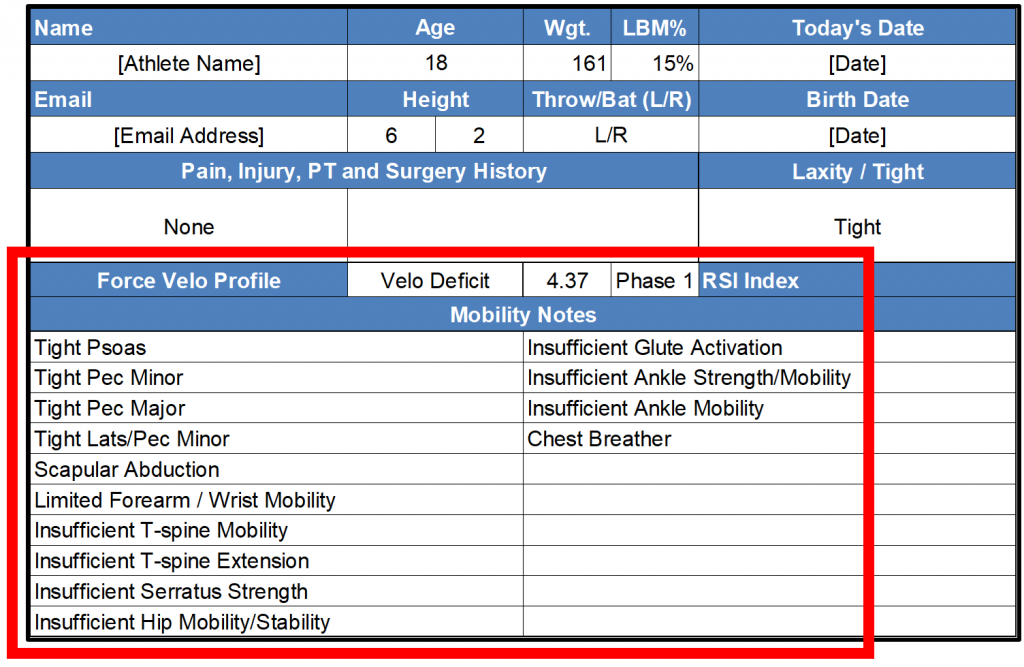
2. Strength and Power Testing
Strength and power testing can give us great insight into the type of strength and power training our athletes are initially producing and help create a blueprint for their strength training programs. It wasn’t long ago when strength testing was primarily measuring the 1 rep max (RM) of an athlete with a variety of different lifts in the weight room. Today, technology is changing this dramatically, literally as we speak. Several new technologies have found their way into the weight room. Let’s review a couple of them.
-
- Velocity Based Training (VBT) – VBT is a method of evaluating the intensity of a given movement through the monitoring of bar and/or body speeds. Until recently, measuring velocity during resistance training was only available to elite athletes, measured with expensive equipment such as a Tendo unit. But now, with the introduction of linear transducers, anyone can calculate percentages of 1RM with high precision at a fraction of the cost. Using technology, we can now zero in on an athlete’s true strength and power as well as get predictions of an athlete’s daily readiness to enable them to train at the optimal intensity for that given day (you may want to read that last sentence again!).
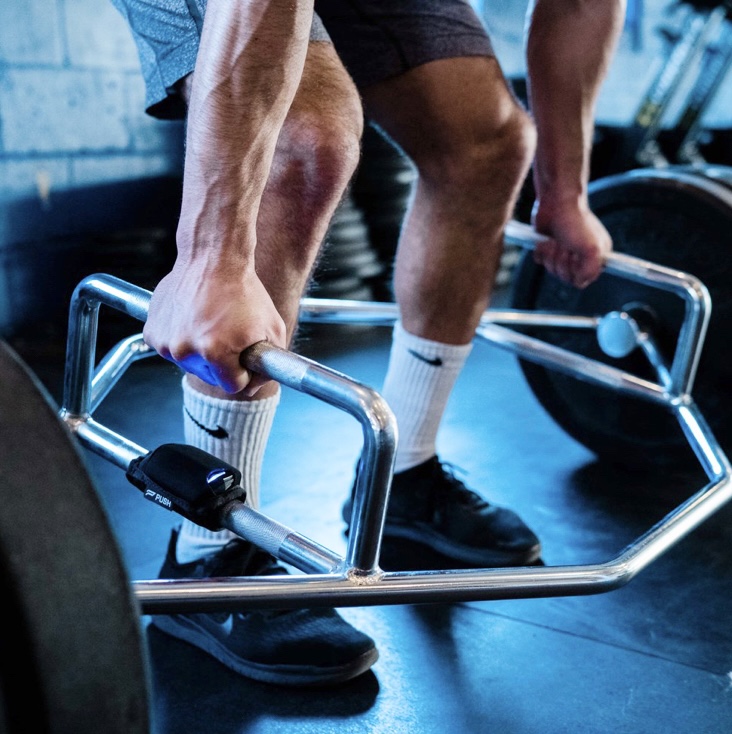
-
- The Force-Velocity Curve – Developing strength, speed and explosiveness in athletes is purely physics. Applying these traits to basic anatomical attributes can get a bit complicated but at the end of the day it’s all about force, velocity, and power. When it comes to training athletes in an explosive sport such as baseball, understanding how the athlete creates power through either force or velocity has a great deal to do with how they should train in the weight room. So, finding which trait, force or velocity, the athlete has a larger deficiency is the concept behind creating force-velocity profiles.
By using a force plate or jump-mat that can measure power production as well as the peak velocities the athletes are moving, we can better understand which side of power (force or velocity) the athlete relies on more and adjust training to give them more of what they need. In this way, we can actually shift an athlete’s force-velocity curve one way or another to help them create the perfect combination to become more explosive.
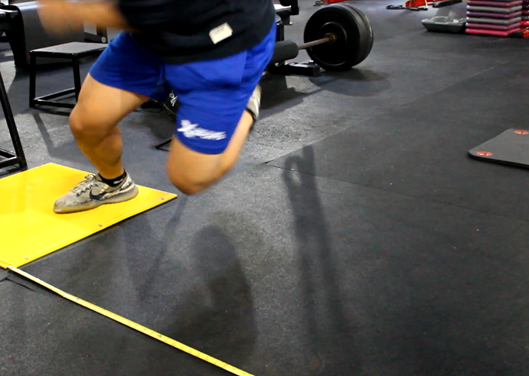
-
- Proteus Motion – This new technology is hot off the presses, as we recently ordered a unit. Proteus is the size of a small cannon and it can measure things that couldn’t been measured previously. It is the first-ever technology to allow an accurate measurement of physical power production in 3D. Although we’ve been measuring power production in the lower half for some time with force plates (mentioned above), we’re excited to be able to assess power production in 3D, especially in the upper body and in the frontal plane. We’re quite sure that Proteus is the first ever piece of technology to allow for this and the rewards should be amazing.
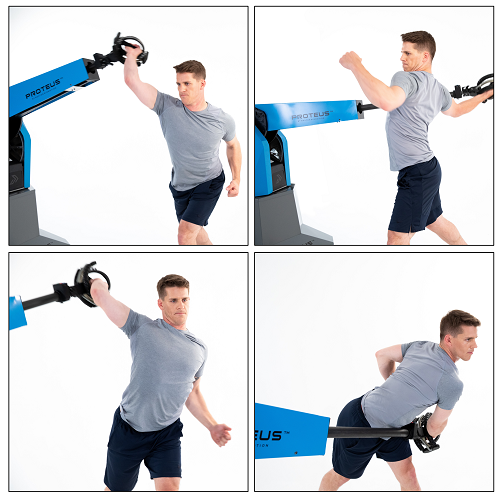
Although every piece of tech in this article is amazing, Proteus might just be the most revolutionary when it comes to assessing and training. To be able to, not only evaluate power production in a rotational movement but also, train it within the freedoms of your own movements is huge. It also allows us to train speed-strength on the strength continuum that otherwise has been delegated to mostly med ball work only. By providing resistance continuously in a manner different than you’d experience with med balls, cable machines and free weights, we can better train eccentric strength and deceleration as well. For pitchers, this will be HUGE!!

3. Pitching Mechanics Evaluation
Since no two pitchers are alike, it is our belief that assessing pitching mechanics is part art and part science. Frankly, the availability of technology forces the science part. We basically perform this part of the assessment in two ways, good old video analysis and with a multi-camera motion capture system.
Video Analysis – In our opinion, assessing a pitcher’s mechanics should start and end with video. All the data in the world can never replace watching a delivery with your own eyes. You can call us old school if you want, but a pitching delivery is a human endeavor, and in our opinion, video is still king.
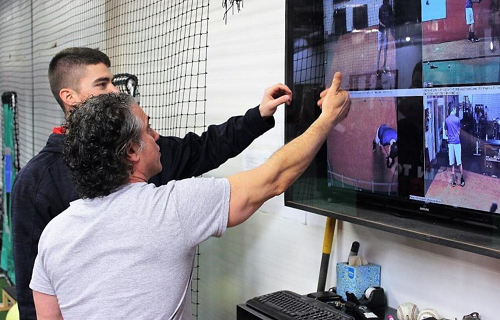
Being able to visually see a pitcher in “real-time” speaks volumes about the athlete’s strengths, weaknesses, and overall athleticism. There are times when video will trump everything else the data is telling us. Why? Here’s one way to look at this. Pitching is an art, so…
-
- If it looks athletic,
- And velo and command are there,
- And there is no pain involved,
- Then LEAVE IT ALONE!
Motion Capture – Motion capture (“Mocap”) is considered to be the gold standard of measuring athletic movement. It is used across many industries and research organizations. It basically refers to recording human movement digitally and using that information to create an avatar at extremely high levels of accuracy.
During motion capture, movements are recorded synchronously with multiple cameras at the same time and 100s of times per second. This information is then mapped to a 3D model such that the avatar performs the same actions as the athlete in the digital world.

The data and information provided by our Qualisys motion capture system can be extremely valuable from several different perspectives, including:
First, it paints a thorough picture of how body parts are moving at extremely high speeds. It’s sort of similar to running a complete engine check while the care is travelling at 100 mph. A lot may seem normal at idle, but things can begin to break down at higher velocities. Basically, you can see and measure things you couldn’t otherwise.
Second, the data allows us to have a much better understanding of the torque and consequent stress placed on different parts of the body during the delivery. While higher stress levels naturally come along with higher velocities, much of this may also be due to strength and/or mobility limitations or less than optimal positions in the delivery (once again, we’re back to the body).
Third, we can use the system to help provide a detailed picture of where in the delivery the athlete may be losing velocity. While velo is obviously what most everyone is interested in, putting the complete picture together is crucial to make better decisions in the weight room and on the mound or at the plate.
A motion capture system can also provide a full kinematic sequence which graphically lays out how velocity is generated from the ground up, from your pelvis to your torso and then shoulders and finally the hand. There are many things that can go wrong as the kinetic chain works itself up the body. Mocap provides the angular velocities up the chain and allows us to numerically and graphically observe how velocity is transferred. Needless to say, all this information is incredibly additive and valuable.
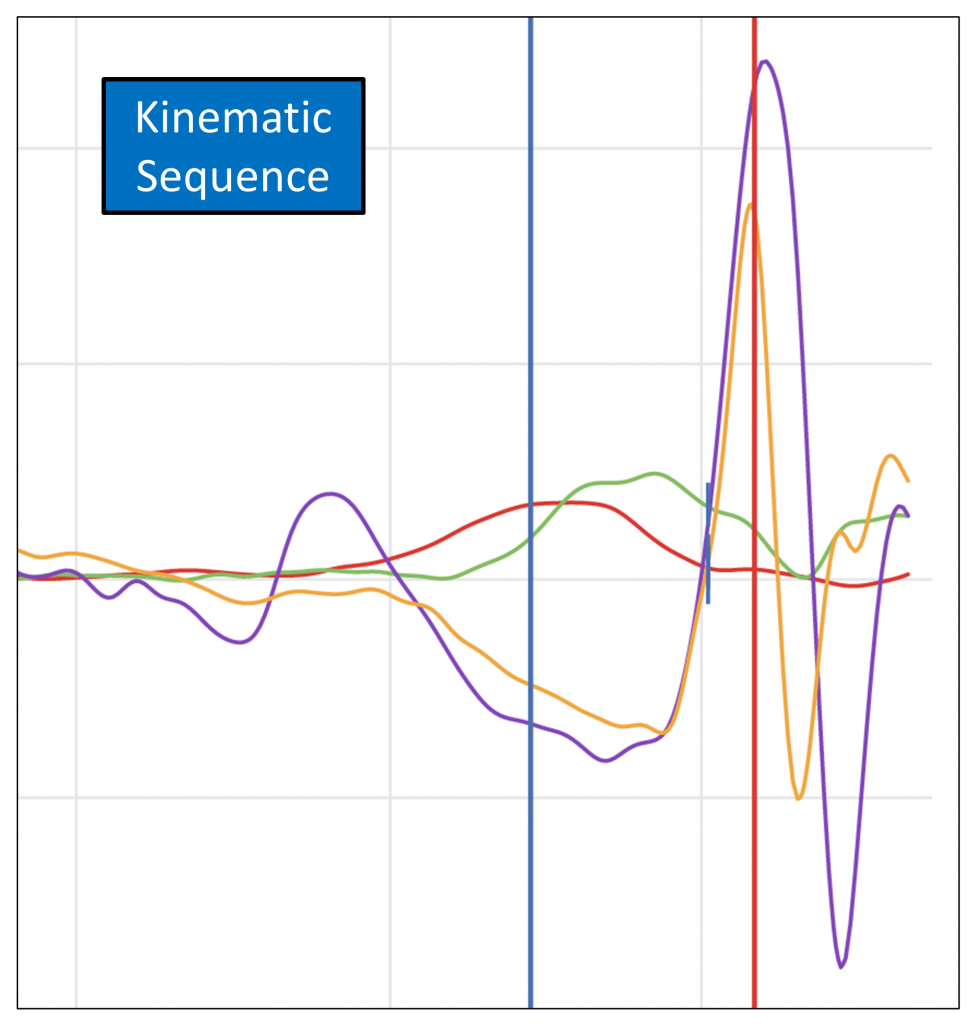
4. Pitch Movement Evaluation
Although Trackman has been around for a while, it wasn’t until Rapsodo came out with their lower price point pitching camera system that evaluating ball movement data started to become mainstream. Now, technology is bringing a whole new realm to training pitchers, all happening at the point of release. Below is a list of five topics we evaluate in every pitcher’s ball movement, among others.
-
- Spin axis by pitch type
- Spin efficiency %s by pitch type
- Differentiation and relative pitch movement
- Holes in the overall movement pattern
- Consistency of arm slot (release height and side)
The measurements will help dictate how you work with each pitcher in a pitch design program. Issues may be varied but here are a few that regularly jump out from this analysis:
-
- 4-seam and 2-seam have similar movement patterns
- 2-seam could use more sink
- Change-up could use more drop and sink
- Curveball lacks sufficient depth
- The curveball is actually a slider
- The slider is more like a pure gyroball
The availability of data makes any discussion mute about ball movement, because the numbers tell you exactly what you’re throwing. When it comes to movement, eyes alone do not tell give you the whole picture.
Below is a summary provided by Rapsodo on how MLB players stack up for many Rapsodo metrics and is a great guide on what to look for when assessing ball movement.
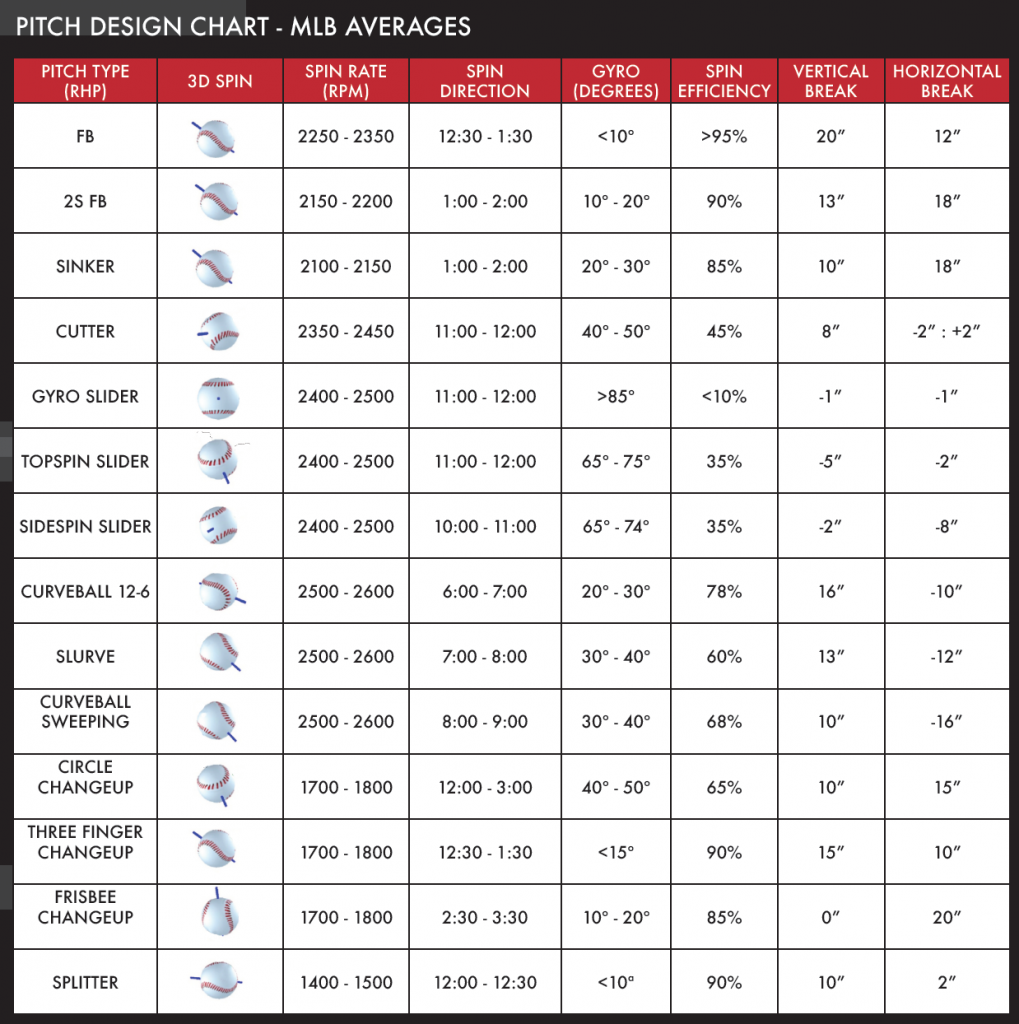
Evaluating the actual release point on video goes hand-in-hand with the ball tracking information provided by Trackman, Rapsodo and other systems. Cameras such as Edgertronic and Rapsodo Insight can be coupled with movement data to provide pitchers with a more visual assessment of how the ball’s spin axis is created at the point of release. They can help you make instant adjustments to create different types of spin and movement on the ball. Although these cameras provide full video in slo-motion, here is an image from Rapsodo Insight at the release point of a pitcher. If you could watch the video, you’d see how the ball’s spin axis is 100% release point generated.
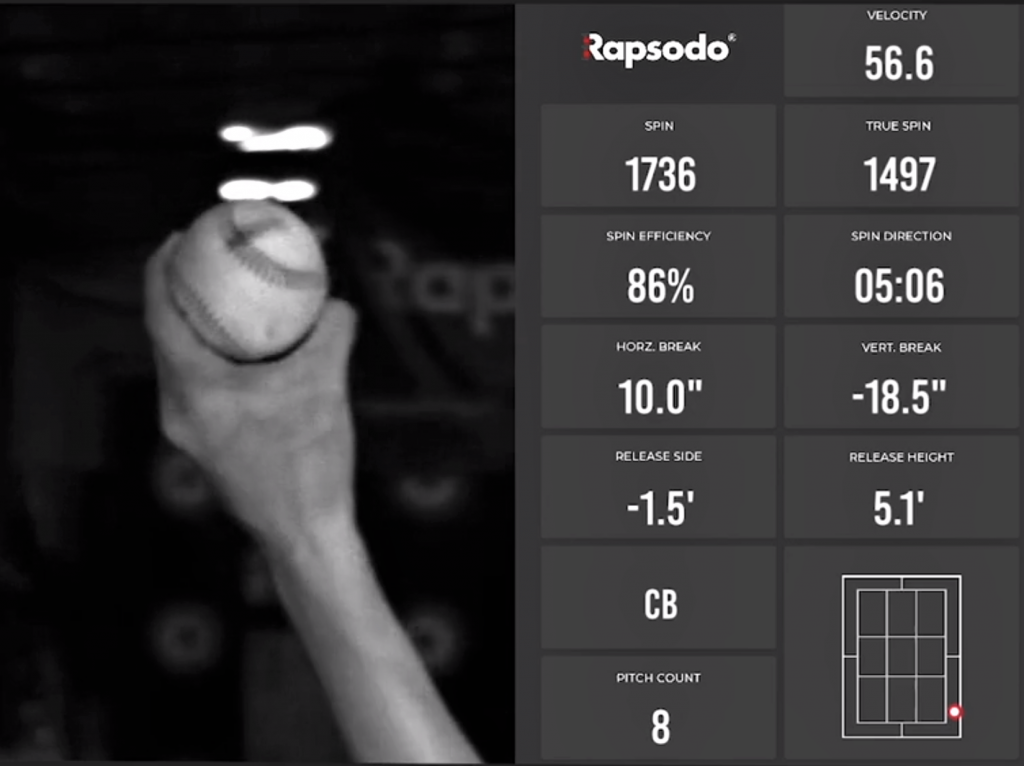
If interested in learning more on this topic, please refer to our article on pitch design published in the July/August 2019 of Inside Pitch Magazine.
Summary
Coaches don’t need to worry about a Robo-Coach. That of course will never happen. Pitching is and always will be an art. However, with the type of information that is available today, pitchers and coaches can reach conclusions and make decisions more quickly. But most importantly, pitchers can develop faster with more precision and focus.
Note: This article was published in the July/August 2021 issue of Inside Pitch Magazine (Official Magazine of ABCA).
By Nunzio Signore and Bahram Shirazi (Owners at RPP Baseball)
If you’d like to be placed on our email list please enter your email address below!

